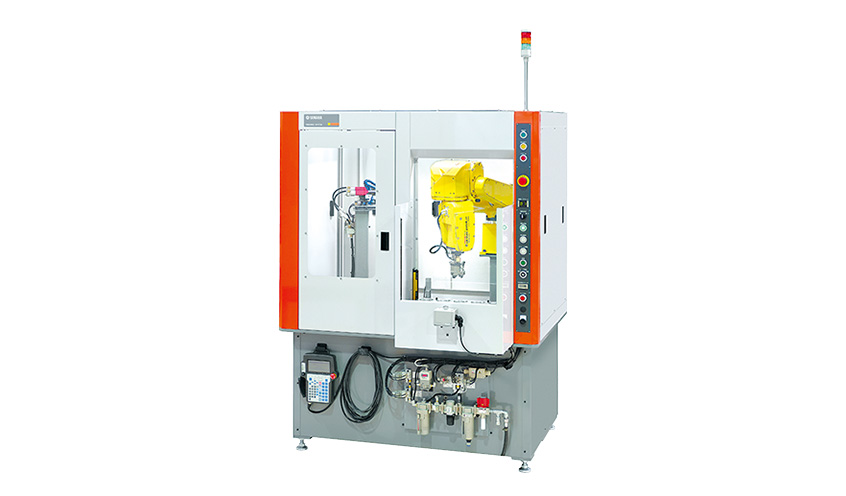Automatic finishing of artificial joints
Automation of grinding and polishing of artificial joints, which are hard to machine manually
Overview
Target
Medical device manufacturersBackground
Support for mass production is required at manufacturing sites, because artificial joint production volumes are increasing as the market growsAbove all, the shortage of artisans for the grinding and polishing processes, which require advanced skills, and the need to improve working efficiency, were urgent challenges
Application examples
Artificial joint![[Image] Artificial joint](./file/907/rb2_img01.jpg)
The issue is the significant work burden
Artificial joint finishing processes require artisans with long experience and practiced skills.
However, there is a severe shortage of such workers, because of the high level of skill, the difficulty of the work, and the harsh working environment.
Titanium, a material that is particularly hard to grind, requires manual machining for long periods, and its low thermal conductivity means that it accumulates heat, becoming very hot.
The work is hazardous and requires extended periods of close attention, so the burden on workers is an issue.
However, there is a severe shortage of such workers, because of the high level of skill, the difficulty of the work, and the harsh working environment.
Titanium, a material that is particularly hard to grind, requires manual machining for long periods, and its low thermal conductivity means that it accumulates heat, becoming very hot.
The work is hazardous and requires extended periods of close attention, so the burden on workers is an issue.
Challenge
Grinding and polishing processes were performed manually, leading to a serious labor shortage because of the high quality requirements and significant labor burden.Points
- Lack of experienced workers and successors
- Significant labor burden due to the “3Ds” (dirty, dangerous, and demanding)
- Variations in finish quality
Conventional method
![[Image] Conventional method](./file/929/rb2_img02.png)
Resolved with finishing robot system
Automate the finishing process for which high accuracy is a must with a robot system purposely-built for grinding and polishing.
Use robots instead of humans in 24-hour operations for tasks that are particularly arduous for workers.
Even on artificial joints which must be made as smooth as possible, Yamaha's proprietary control method maintains high quality by reproducing human sensitivity.
Use robots instead of humans in 24-hour operations for tasks that are particularly arduous for workers.
Even on artificial joints which must be made as smooth as possible, Yamaha's proprietary control method maintains high quality by reproducing human sensitivity.
Solution
Introducing a dedicated robot system for the finishing process to the processing line contributed to greater stability in quality levels, and reduced demands for workers.Points
- Solved the issue of worker shortage and reduced labor costs
- Improved environment and reduced burden on workers
- Stable quality levels achieved through unique control
Example system
![[Image] Example system](./file/935/rb2_img03.png)


